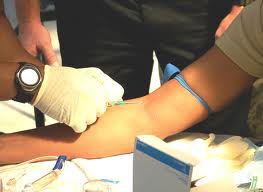
Phlebotomy is the extraction of blood from the body using a needle.
Phlebotomy is the extraction of blood from the body using a needle. The word phlebotomy comes from a Greek word that means: “cut the vein”.
Phlebotomy is usually required for blood tests, and sometimes this process is done for blood transfer. People who have an iron excess in their blood and produce a large number of red blood cells, undergo the process of phlebotomy in order to balance their blood.
You may encounter a situation where you need to donate blood, or perhaps participate in a blood test. Have you ever felt any discomfort or pain when the needle was inserted into your vein to withdraw blood? The person who did the procedure to you, in fact, is a technician that holds a phlebotomy certification.
The phlebotomist is a trained person who is able to find a vein under the skin, inject the needle to extract blood easily, even in a matter of seconds. They also control blood pressure and pulse rate in cases of blood transfusion or donated blood in blood banks.
Phlebotomists are vital members of a health care team. They collect diagnostic tests that help physicians make informed decisions. Rescuers are also working with blood banking services to encourage blood donation campaigns.
Phlebotomy is safe when it’s performed by certified technicians. They have to be careful of skin injuries and veins inflammations, which represent a potential danger for both the patient and the technician alike. Piercing the skin requires the use of finger sticks. In some cases, it may be necessary to extract blood from the arteries or capillary beds. Phlebotomists may need to verify urine samples.
In the United States of America, phlebotomists who are unauthorized cannot have a job in all medical laboratories, hospitals, research institutes, public health clinic or blood banks. The states of California and Louisiana are exceptions though.
Those who have received vocational phlebotomy training, and spent nearly two years in this field must engage in the process of ratification. This will increase their work effectiveness on human anatomy, technical and personal skills, rules of laboratory safety and compliance with OSHA requirements. In addition, they will learn more about managing, storing and preserving patients’ files, as well as many other administrative tasks.
The phlebotomist is an important member of the medical team and this is evident in the statistics of compensation. The equivalent to the average wage is U.S. $ 29.00 and hour. As well as remuneration, working hours are flexible, which makes this job more interesting.
Return to the home page of Mad Progress

